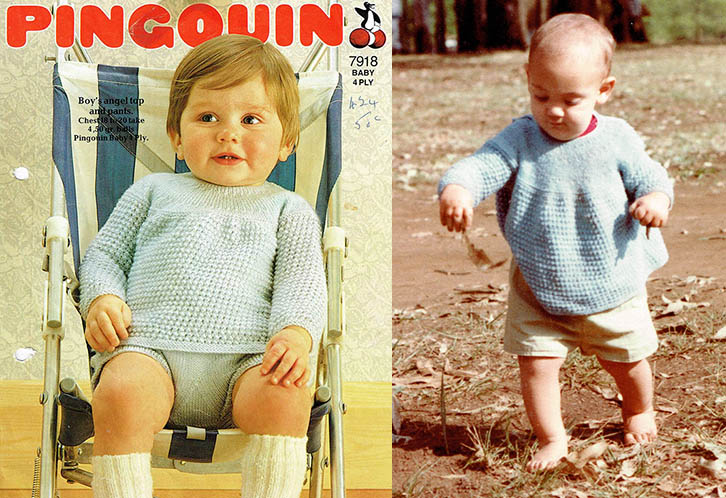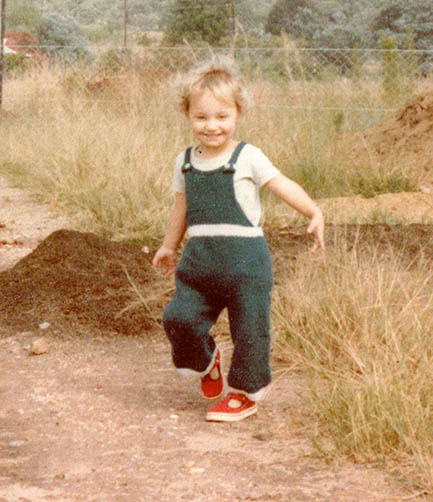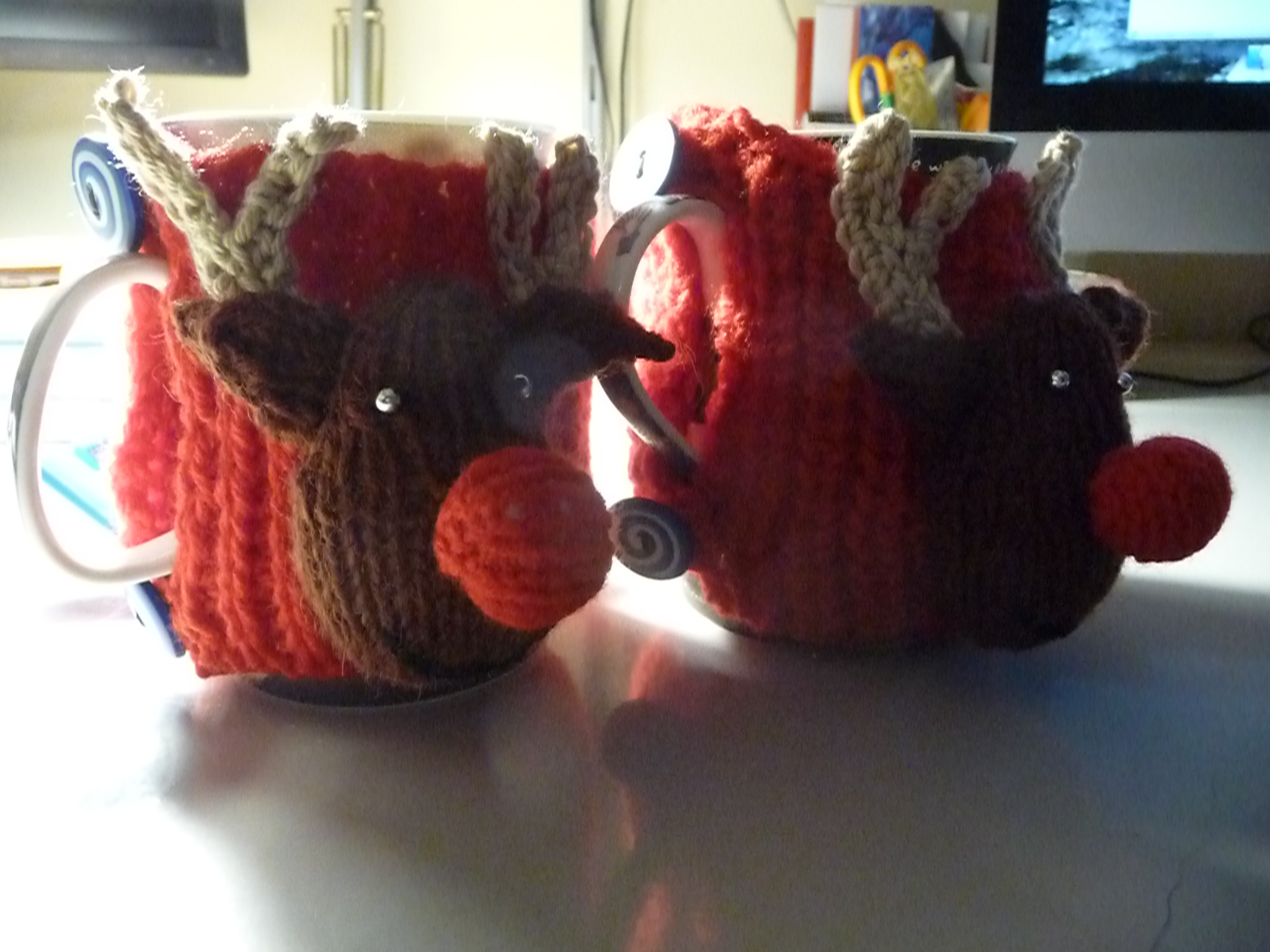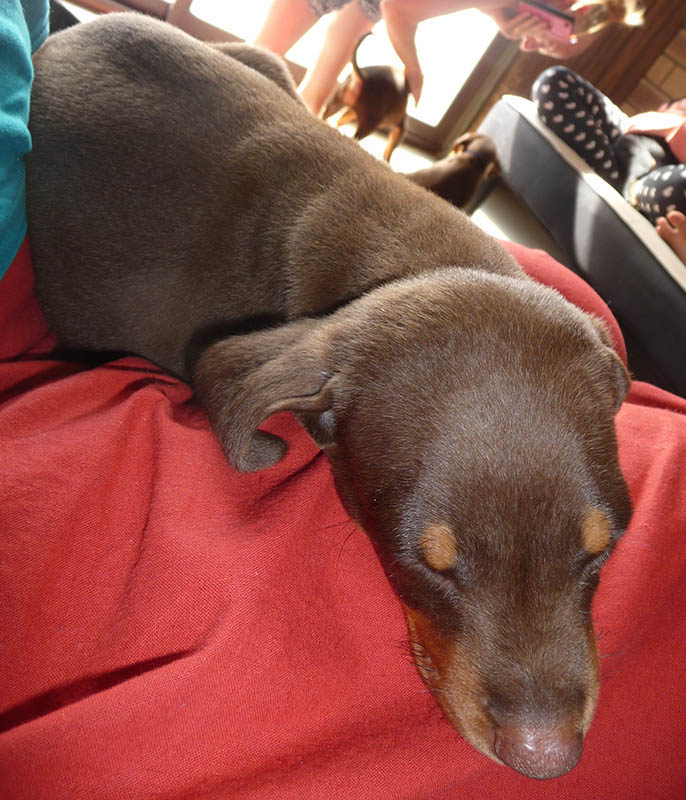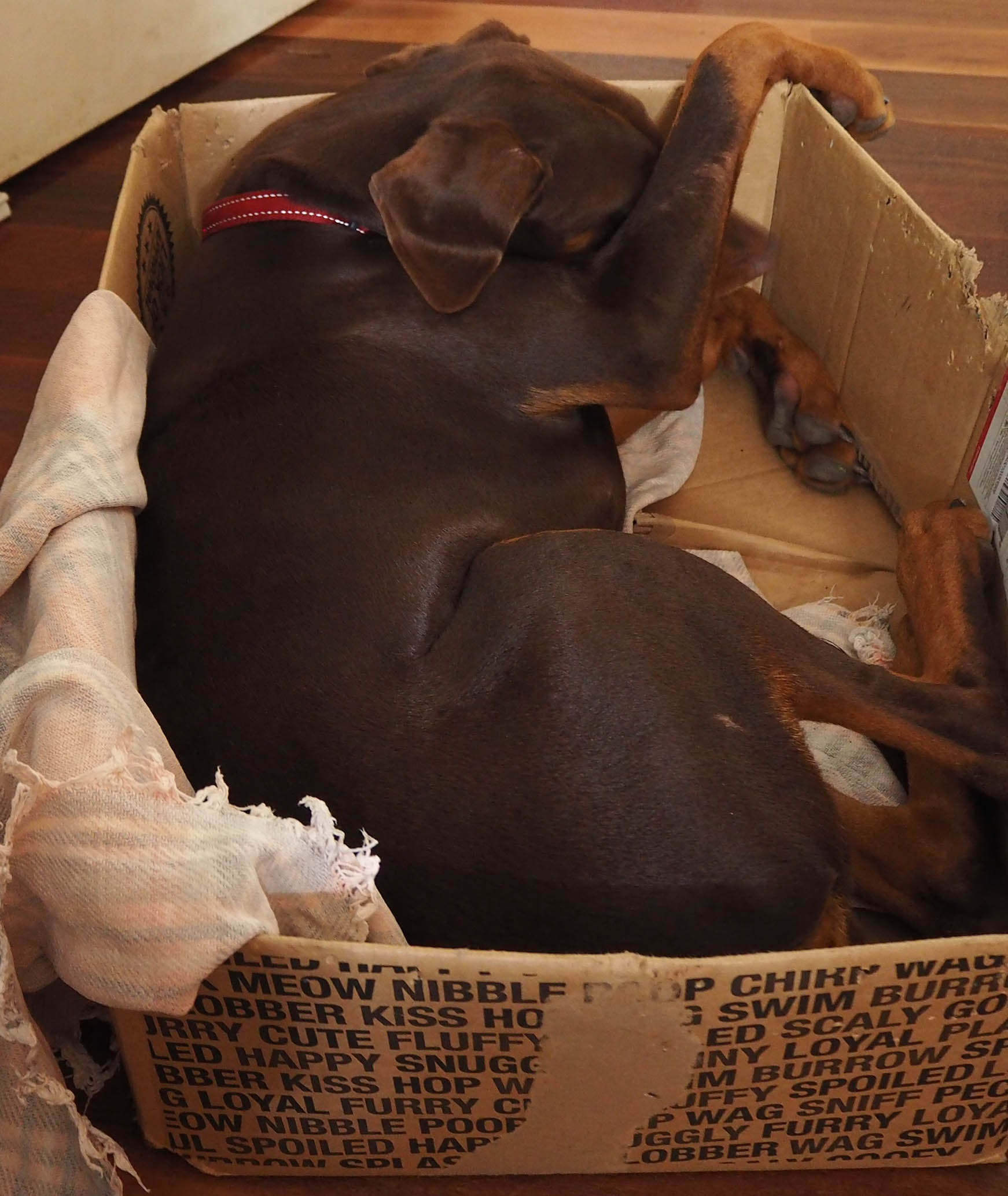My sister and I are off to the epicentre of woollen fashion, fine food and beautiful fibre at ridiculous o’clock tomorrow morning and my thoughts have thus turned to all things knitty. Yes, I knit – in public and in private, pretty much whenever the opportunity arises and my hands need something to occupy them to pass the time. It requires little in the way of special equipment, is portable, relaxing, sometimes frustrating, can be done in company and generally produces something that’s, at the very least, useful. An all-round winner, really.
I feel as though I’ve always knitted, but in actual fact knitting isn’t something that came naturally to me at all. My first attempts were thrust upon me by hard-hearted junior school teachers who appeared to believe that all girls could (and should!) knit. My tangled, grubby yarn and overt lack of enthusiasm eventually disabused them of this notion, but it took great diligence on my part to achieve this.
Congratulating myself on a narrow escape, I moved on to senior school. To my horror, the knitting-monster was lying in wait when I got there. The teachers ‘encouraged’ all the girls (yes, a girls school) to knit squares every year. These were then sewn into blankets (presumably by the teachers or some gullible mothers) and donated to a local age-care facility that the school helped to support.
It seemed like bad form not to participate and, to my surprise, squares turned out to be something that I could knit. Indeed, by the time I left high school, I could churn out a pretty good square over a couple of days, knitting at recess whilst chatting to friends. I didn’t realise it at the time, but this simple knitting project – and the feeling that I was helping to contribute to a good cause – changed my attitude to knitting and almost certainly encouraged me to develop a social conscience.
Several years later, a knitting-pro friend encouraged me to try knitting again, starting with something small. She taught by example, become the then-equivalent of my personal YouTube knitting video stream. I could ask her to show me the same thing again (and again) and she’d patiently ‘replay’ the bit I didn’t get without being ‘judgey’ about it. The result is that I’ve dabbled with fancy stitches, fair isle, used intarsia as a way to create pictures on jumpers for my children, tried socks and created toys. My latest adventure is to join a knitting group and to give interlace knitting a try.
So I guess this means that, whilst I’m certainly not a pro-knitter, I’m no longer a rank novice. This is oddly satisfying, considering the rather rocky start. I’m looking forward to meeting some extreme knitting-nuts, perhaps learning a new technique or two and seeing (and buying) some beautiful yarn.
Bendigo, I hope you’re ready for us!
My best friend flew up from Brownies to Guides when we were about 11 years old. I wasn’t a fan of Brownies – the one time I went along they’d seemed to spend all their time doing what I considered frightfully ‘girlie’ things. Guides, on the other hand, apparently went camping and did lots of outdoor activities, which all sounded much more fun. So I joined up. The only downside turned out to be that I had to polish my shoes on Friday afternoons before going to meetings, but I soon learned to offset that by not polishing them on Friday mornings before school 🙂
In no time I’d mastered reef knots, sheet bends and that most useful of knots, the bowline. I learned basic first aid and was taught how to raise, lower and fold a flag. We did indeed go camping and we also played endless variations of Kim’s game. In the version we played, 24 different objects were placed on a tray and covered with a cloth. The items were then revealed to the player for a limited time, say one minute, after which they were covered up again and the player was asked to list as many as s/he could remember. It was fun – and good training in observation and recollection. We also learned what has turned out to be a most useful skill, namely Scout’s pace – a method of covering distance fairly quickly by alternating running and walking 50 paces. This gives one time to recover somewhat in-between bursts of running and is much more fun that jogging or running flat out!
One of the most interesting aspects of my time as a Guide was getting involved in the international pen pal scheme. Our troop established contact with a troop in Canada and a few of us started corresponding with girls of similar ages in Toronto. This wasn’t my first encounter with correspondence, as my sister was living in Angola at the time and I would occasionally exchange postcards with her. In both cases I learned a little about how and where other people lived and, as importantly, started to write for pleasure.
In later years, I began to keep journals, corresponded with friends via snail mail and email, wrote a lengthy work of narrative non-fiction and, more recently, a memoir. Last year I job-shared for a while and ended up with my other half (of the job share) as an office pen pal. We left descriptive and informative notes for each other so that we would both know what needed to be done. It was surprisingly entertaining and I found that I missed that more than any other part of the job when I left.
All of these writing experiences have been influenced by those early pen pal days, by learning how to express myself in ways that a reader might find interesting. I was therefore delighted to receive a card in the mail a few weeks ago, sent to me by a friend who also lives here in Perth. She chose to post a physical card rather than send an email or a text message. It was a lovely surprise, as was the follow up package I received a couple of weeks later. This contained an eclectic range of goodies, from a vintage magazine to a beautiful drawing of a teacup. The magazine includes a pattern for a knitted poncho and a recipe for a no-bake Pavlova. Win!
I’ve sent a physical reply (in the mail) – and have created this to augment it. Enjoy, dear Pen Pal 🙂
I’ve occasionally contemplated whether I have a tendency to be pessimistic, since I often see the downside of things as well as the upside. After some thought I’ve concluded that I am, in most instances, simply pragmatic.
Pragmatism is a practical approach both to situations and problems, concentrating on facts rather than ideas or emotions. Instead of a Pollyannaville or Doomsville approach that pushes one towards unrealistic expectations of one sort or another, it’s a ‘hope for the best, plan for the worst’ outlook – an efficient, organised and utilitarian way of being that allows one to be ready for most eventualities.
Taking the inevitable glass half full / half empty dilemma as a point in case: from the perspective of a pragmatist, it’s never an all-or-nothing scenario: the glass is simply as full as it is – so either drink the contents or don’t. I find this very straight forward and, having made my choice (to drink or not), can simply get on with the next thing and leave the relatively pointless debate to those who feel more in invested in discussion than in outcomes.

Very probably with age everyone tends to become somewhat more pragmatic and less inclined to get bogged down in situations or endeavours that are unlikely to achieve results. This outlook should, however, not be confused with an inability to get excited at the prospect of Santa’s sack of toys (or some other anticipated event), with being immune to surprise or with an absence of idealism. It’s simply that a pragmatist is more inclined to try to identify and anticipate likely outcomes on the basis of probabilities and thus cope more efficiently with the vagaries of life.
I have started to question, though, whether a little of the wonder at the world around us might be lost when too large a dose of pragmatism is applied to every situation.
Dogs have been part of our household landscape for as long as I can remember, from my faithful childhood hound (Gypsy) to our current puppy many years later. At various times we’ve shared our home with a range of Heinz-57s (mixed-breed dogs), a Border Collie (briefly), a Welsh Springer Spaniel, Labradors, German Shepherds – and now have a young Doberman. I’ve spent years dog wrangling: from feeding, grooming, exercising and training to planning holidays around their needs. None of these things has been particularly arduous – indeed most of it’s actually fun, but it’s an ongoing commitment. In a blogpost last year I introduced you to Miss Molly, the most recent addition to the family. Seven months on, she continues to take great delight in showing me in various an assorted ways (every day) that a Doberman poses a few challenges I’ve not encountered with our other dogs.
Until MissM joined the family, I firmly believed that dogs should sleep in their own beds, ideally in the laundry or kitchen. I still believe that… but it turns out that my bed is super comfortable and my pillows especially so. Indeed, if my head happens to be on my pillow… well… heads are apparently pretty comfortable too. It turns out that Dobermans are very people focused. What this means is they don’t much like being on their own. In fact the closer they are to you, the happier they seem to be. If you stand still for more than a few seconds you end up with a large lump of dog leaning against the back of your legs. You move, she moves – and leans. I’ve discovered that the all-time favourite Doberman zone appears to be a lap – pretty much any lap, really. MissM fitted in mine quite comfortably when she was 12 weeks old and she got the idea that this was a thing.
At 10 months she’s quite a lot bigger and ends up draping herself across me when I sit at my computer, which definitely doesn’t work for me – although she seems perfectly happy with the arrangement if that’s all that’s available. This up-close-and-personal attribute of Dobes has been both my biggest challenge (not what I’m used to in a dog) and surprisingly enjoyable and companionable.
MissM’s big chest, sleek head, strong legs and narrow waist (not to mention rather pointy claws) make her a very elegant looking dog. This is misleading, as she’s actually all paws, legs, claws and very wet tongue – and is keen to share all of them. Doberman pups are happy, friendly, waggy-tailed and will do anything for food – and for attention. They are jumping dogs – both on and up. Ours jumps to my (not insignificant) shoulder height with all four feet off the ground when she’s excited. She’s very excitable…
Dobes are also stubborn, wilful, tend to be mouthy (and by this I mean both barky and chewy) and need firm, consistent behaviour modification. This means grabbing the pup gently but firmly by the shoulders or collar when they transgress and telling them NO in a deep, firm voice. Every time they transgress. They learn fast, but will push your limits until they’ve figured out that they won’t win that particular little battle. Reinforcing the NO with eye contact helps, but it takes consistent (and exhausting) repetition on some fronts.
In MissM’s case, we have two particular challenges. One is her tendency to jump up on us (and visitors) and the other that she grabs our hands in her mouth. In a small pup this may seem cute(ish), but in a big dog it’s no fun at all and needs to be nipped in the bud – or as soon as plausible. Despite all suggestions from friends and family on this front, Dobermans really don’t respond well to physical punishment, such as a rolled up newspaper swat to the bottom, and are particularly mood sensitive to their owners.
So, to solve the jumping issue, we’re getting her to SIT before being greeted or patted by anyone. In a matter of days we saw an improvement – although training some visitors is almost as challenging as training MissM! With regards to the ‘mouthing’, we’re trying object replacement. When she grabs at hands, first comes the NO, then offering a replacement – an appropriate chewable item – and placing it in her mouth if necessary. When she chews on the toy instead of the hand, she gets praised immediately. If she tries chewing hands again – then it’s rinse-and-repeat: more of the NO – more of the replace with a toy, etc. Repetition and consistency really are the keys to success, along with patience. Bucket loads of patience…
What I don’t get is how this breed got such a scary reputation. They’re definitely super protective – and a stiff-legged, deep-chested baying bark resounds around the neighbourhood every (every!) time anyone walks past the house. Actually, car doors shutting, the chickens scrabbling in the hutch and a wide range of other sounds also initiate a Hound of the Baskervilles response. Loud? Definitely. Scary? Well, I’ve an idea that popular culture has a lot to do with these perceptions.
Having said that, I’d say that taking your Doberman (or any puppy, really) to training should be mandatory. If nothing else, it trains the owner/handler in how to manage themselves, which makes it easier for the dog to be compliant. Eventually.


